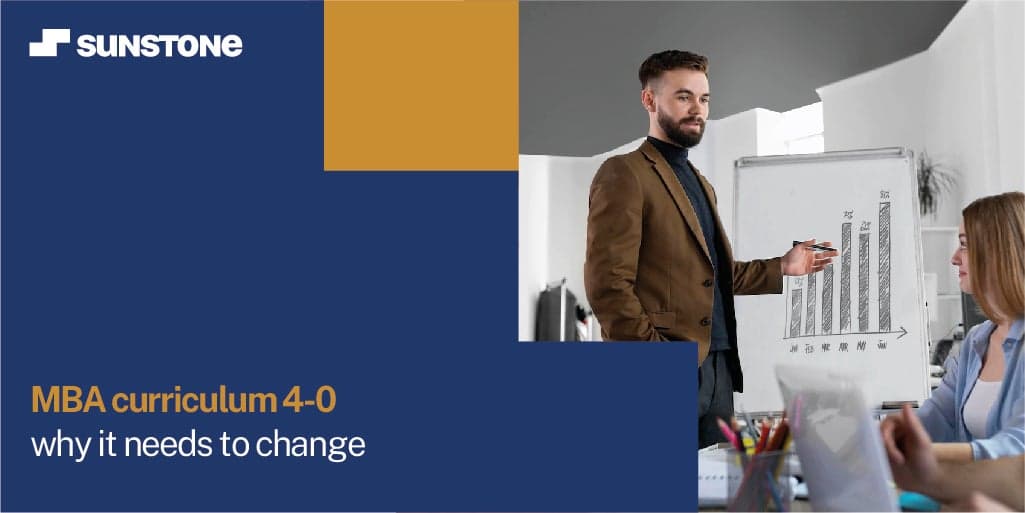5800 students unlocked their dream jobs with UG/PG programs in top colleges. Apply Now!
With the whole world familiarising and getting used to life with the pandemic, everything is under the scanner, including the MBA degree. The MBA curriculum is one of the foundations that build this degree to its stature and with the new normal, the MBA curriculum needs a disruption. The MBA degree needs to undergo changes need to be made keeping in mind the talent pool leaving the B schools and the current industry requirements.
According to a survey done by ASSOCHAM, only 7% of MBA graduates are employable. With millions leaving B schools every year, such low employability numbers are heartbreaking. This imbalance is because the curriculum is not providing current MBA graduates with the apt skills and business acumen needed to solve modern-day corporate challenges. This in turn is because the MBA curriculum being taught at B school is in a great need of a revamp to make it more practical to today's MBA aspirants.
The first change that B schools have to look into is the curriculum.
How an MBA Curriculum Should be Designed?
Instead of a one-size-fits-all approach, the MBA curriculum should facilitate the process of ‘discovery’ — encouraging ‘exploration’ and ‘experimentation’. Students should be able to customise their learning pathways depending on their style, pace, and learning orientation.
The second big change will be to help in the ‘holistic development’ of the students. Students should be exposed to multiple disciplines across humanities, performing arts, design, language, science and social sciences. A holistically developed MBA graduate is expected to embrace change with an ability to respond effectively to changing career options at different stages of one’s life.
The third change will be the integration of technology across courses. Today, AI and Big Data are being used across many professions, ranging from the medical sciences and healthcare to sports and entertainment. Institutions will need to help develop in their graduates an appreciation of data integration with their areas of professional expertise.
The Social Aspects of an MBA Curriculum
In a country like India, where exists the issue of social inequality, our institutions need to make students socially responsible and be sensitive to the rich diversity and culture. No professional will be able to function in the future without an understanding of the impact of their actions on the environment and society. Our education policies should reflect an acceptance of all races and castes. An example of the Interventions that expose students to the issues of social reality is the SDGs (UN Sustainable Development Goals) introduced by the United Nations in order to inculcate the habit of putting the environment and society before our own needs. These sustainable goals will be a requirement in the planning of the curriculum for the future.
The essence of ‘leadership development’ lies in ‘self-management’ and ‘self-development’ with a little bit of discipline. In a survey done by IFIM-NHRDN clearly indicates ‘wellness’ and ‘fitness’ as integral elements of managing one-self. As institutions prepare graduates for the ‘Future of Work’, there will be an urgent need to integrate ‘wellness’ and ‘fitness’ as part of the required MBA curriculum, particularly in the post-Covid era. This will help the student in creating a well-balanced work-life and leading a healthy lifestyle.
How Can We Better Prepare MBA Students for Industry 4.0?
Industry 4.0 has arrived. Industry 4.0, coined by German Chancellor Angela Merkel, refers to the emergence of cyber-physical systems. Cyber-physical systems are linked together to form a cyber-physical system online. Industry 4.0 is propelled by artificial intelligence. Here are some ways in which we can prepare the students for the same:
- Flip the Norm of Admissions: How do you select students for admission? What do you look for when you're out and about? Look for innovation, creativity, and tenacity when evaluating MBA 4.0 candidates. Determine how much of the student's learning has come from open sources, unaccompanied and independently.
- Revamp Course Material: Request that your faculty analyse and deliver the course's open material in order to assess their critical thinking and creativity. A mandatory part in course outlines should be open material evaluation.
- Encourage Social Media: Encourage pupils to use social media to "showcase" their work. It's impossible to predict which dots that procedure will join or for whom. By gracefully exhibiting course outcomes, you may subtly and firmly establish the reputations of your students, your institution, and yourself.
Final Thoughts
In the years ahead, most of the repetitive tasks and easy problems will be handled by machines. We will be more involved in decision-making and imagining future possibilities. The pedagogy of teaching-learning will need to move away from information-heavy concepts to imagining solutions for the future. A typical in-class case discussion will no more be about ‘what happened?’ but about ‘what can happen?’.
This implies a change both in the content and in the delivery through the MBA curriculum. Institutions will need to travel that extra mile to re-ignite the imagination ability of their students, take an approach to learn that can facilitate self-learning.
About Sunstone
Sunstone is a leading higher education service provider that works with academic institutions in up-skilling students for employability. Sunstone offers career oriented training interventions for undergraduate and postgraduate students at 30+ institutions across 25 cities.
Sunstone’s training programs are industry endorsed to enhance employability. These programs are designed for hybrid delivery with unparalleled focus on soft skills and personality development. Sunstone’s focus is to provide students with holistic educational experience.
HELP
Take the first step towards your dream job.
ABOUT THE AUTHOR

